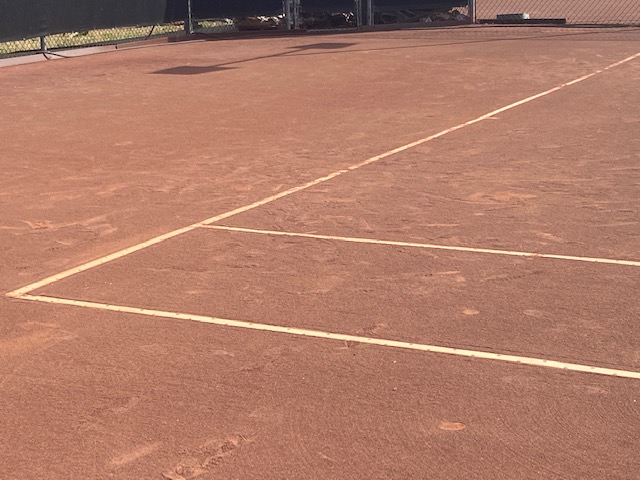Tennis News You Can Use
From the earliest posts about the tennis related impacts of the COVID-19 pandemic, I have bemoaned the lack of rigorous scientific evaluation of potential transmission of the SARS-CoV family of diseases via tennis balls. A recently published study has changed that situation. At first glance, the news is fairly promising which apparently prompted the USTA to issue a statement on the topic.
A recent study determined that the surface of sports balls, notably football, golf, cricket, and tennis balls, are unlikely to harbor SARS-CoV-2 in a manner that is compatible with risk of developing COVID-19 from handling the ball during normal play. The International Tennis Federation (ITF) Sport Science and Medicine Commission, the USTA Sport Science Committee, and the USTA Medical Advisory Group support this conclusion.
USTA Statement on regarding possible COVID-19 transmission on tennis balls, 12/11/20.
Overthinking tennis is the hallmark of this site. Additionally, my day job involves evaluating papers on highly technical scientific topics, albeit not in the medical field. Through the course of that activity, I am well aware that the popular media sometimes publishes summary of research papers… that doesn’t exactly align with the source document. I am wired to go out and read the original research for myself.
The first question is… which study did the USTA reference in this statement? Direct identifying information or an explicit reference was not provided. My own records search turned up only one candidate paper which was published in Public Health in Practice.[2] The initial reading of that paper did not impart the same degree of positivity as expressed by the USTA.
I do think that that paper is the one on which the USTA statement was based. The reason for this is that the list of sports balls between the USTA statement and the paper were exactly the same and presented in the same order. I do feel compelled to point out that the football in this study is what people in the United States would usually call a soccer ball. The inclusion and prioritization of cricket is another clue that this research was performed in the UK.
Study Details
The study of sports balls including a football (soccer ball), tennis ball, golf ball, and cricket ball were indeed determined to be unlikely to transmit the SARS-CoV-2 family of viruses under certain experimental conditions. Five experiments overall were performed in the study. However, a tennis ball was only used on two of those experiments.
Experiment 1 was performed in two phases. First a tennis ball which had been previously verified to not contain COVID was exposed to a 1000 dC/mL diluted viral sample using polyester swabs over the entire surface of the tennis ball. The tennis ball was left to stand for 30 seconds and was then tested for the virus using a medical collection swab over the entire surface of the ball. The tennis ball tested negative for the presence of infectious material at that point.
Part two of Experiment 1 was to wipe down a tennis ball with a disinfecting wipe, and then retest for COVID. Unsurprisingly, the surface of the tennis ball still tested negative. It would have been really weird if it had been positive since the virus was not on the ball before being disinfected.
In Experiment 2 the concentration of virus used to infect the tennis ball was increased by a factor of 5 to 5000 dC/mL. Even after that increase, the tennis ball tested negative for viral material after initial application. The balls were then rolled around on grass to simulate play and again retested negative.
Interpretation of Results
The authors of the study, do not draw overwhelmingly positive conclusions on the basis of Experiments 1 and 2. The report specifically states “One can speculate that using polyester swabs to apply the virus to the surface of balls may be sub-optimal as polyester may significantly absorb the quality control material and the concentration of the virus in the surface of sports balls will be lower than the method’s detectable threshold.”[2]
The authors also observe “Certainly, experiments (1 and 2) do not reflect real-world settings.”[2] None of the balls from any sport tested positive for infectious material in the first two experiments.
Experiments 3, 4, and 5 were performed exclusively on a cricket ball. In those cases higher concentrations of infectious material was applied to the cricket ball directly using a pipette. That would simulate a player either coughing or sneezing on the ball.
When directly applied to the surface of the ball via that method, the cricket ball tested positive. However, wiping down the cricket ball using a sanitizing wipe after various durations removed all traces of the virus. In fact, other published sources on this study draw the conclusion that transmission via sports balls is low provided that the balls are regularly cleaned with a disinfectant wipe. That isn’t really practical for a felt tennis ball.
Cricket balls also had infectious solution directly applied and were then rolled around in the grass to simulate play for five minutes. Those balls also tested negative. It should be noted that rolling balls around on grass is not a realistic play scenario for tennis.
Bottom Line
This study provides some initial promising data, but the results for tennis were incomplete. Expressed in real word terms, if a player sneezed into a tissue and wiped the ball with a tissue, that would be unlikely to transfer the virus to the ball. By my reading, I don’t see any conclusions for tennis beyond that.
The tennis industry associations should be lobbying for experiments 3, 4, and 5 to be repeated for tennis balls. Those studies should replicate plausible play scenarios for tennis rather than simply rolling the balls around in the grass.
It is super exciting to see rigorous scientific study about potential transmission of the SARS-CoV family of viruses on tennis and other sports balls. As a tennis community, we need to make sure that we don’t get too excited about preliminary results that are incomplete and inconclusive.
I personally do not believe that SARS-CoV transmission via the surface of a tennis ball is highly likely. However, the desire to see evidence that supports that opinion shouldn’t put us ahead of the science. It will probably catch up soon enough anyway.
- USTA Statement on Possible COVID-19 Transmission on Tennis Balls, Racquet Sports Industry, December 11, 2020.
- Sports balls as potential SARS-CoV-2 transmission vectors, Michel Pelisser, et al, Public Health in Practice, November 1, 2020.
- Play Sports? Don’t Worry About Coronavirus On Your Equipment, JV Chamary, Forbes, September 30, 2020



